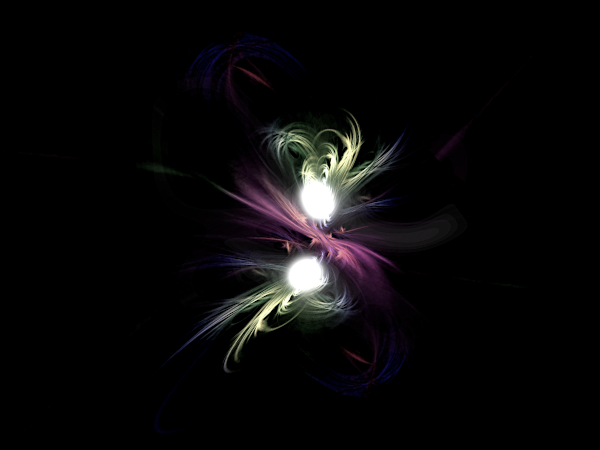BY LETTER
Q-Battery
Technology > Technology Type or Material > Drytech/Hylotech
Sophonts > Archailects > Fourth Toposophic - Lesser Archailects
Technology > Application > Power Generation
Technology > Technology Levels > Transapientech / Godtech / Clarketech
Sophonts > Archailects > Fourth Toposophic - Lesser Archailects
Technology > Application > Power Generation
Technology > Technology Levels > Transapientech / Godtech / Clarketech
 Image from Steve Bowers |
Background
As a side effect of the conversion of matter to anti-matter via Q-ball reflection, Q-balls absorb the baryon number of each particle they interact with and store this energy in the zero point field of the vacuum. Individual Q-balls can convert some 5e33 protons (approximately 8.365e6kg) of matter to antimatter (equivalent to 7.46e23 Joules) before reaching 'Q-crit' at which point the maximum amount of energy that can be stored in the basic vacuum states associated with the Q-ball is reached. While the vacuum energy associated with a Q-ball scales linearly with proton number, its apparent mass scales with proton number to the power of 0.75 - which means that, as far as external observers can determine, a maximally charged Q-ball storing mass-energy equivalent to over 8000 tons of matter only masses 31.46 grams. At this point the Q-ball is considered to be 'depleted' and will cease to convert matter into antimatter.In practice Q-ball depletion is an extremely rare occurrence since the use of Q-mirrors to convert matter to amat involves the use of vast numbers of Q-balls and each individual Q-ball will only convert a relatively tiny mass of particles to amat, even if the mirror as a whole is responsible for the conversion of many tons of material per unit of time.
Historically, such depleted Q-balls were occasionally 'recharged' by being re-tasked to convert antimatter back into matter but were more commonly discarded or stored for potential future use. This state of affairs changed drastically with the rise of the early S4 minds.
Fourth Singularity Q-Battery
At the Fourth Singularity it becomes possible to extract the stored vacuum state energy of a Q-ball and employ it to do useful work. The exact mechanism of this process appears to be beyond the comprehension of lower singularity minds, but observers have witnessed the technology produce energy in the form of heat, light (ranging from radio to gamma ray frequencies), or even direct electron production. Energy output can also be 'tuned' such that the stored vacuum energy is released all at once or over an extended period of time. Since any individual Q-ball may only contain a tiny amount of stored energy on its own, it is far more common to employ an entire Q-mirror for the process. It is also far more common to convert a Q-mirror to use as a Q-battery long before the individual Q-balls making it up have reached their maximum capacity.While S3 minds are able to subdivide a Q-mirror as a matter of great care and effort, S4 minds seem to be able to do this with trivial ease. This means that large, industrial scale Q-mirrors can be used to convert large quantities of matter to antimatter - sometimes millions or billions of tons at a time - and then be rapidly converted into large numbers of extremely compact and powerful energy sources for use in a host of applications ranging from powering remote probes and installations to world destroying bombs too small for the unaugmented human eye to see.
Fifth Singularity Q-Battery
Among Fifth Singularity entities, the technology of Q-batteries advances considerably. Specifically, the limitations of Q-crit are somehow removed and the storage potential of each Q-ball increases massively, up to a level of some 40 Solar masses - commonly referred to as 'Q-black hole'. This, combined with both improved methods for managing matter-Q-ball interactions and the construction of Q-mirrors durable enough to convert medium mass astrophysical bodies (brown dwarfs, M-type stars, white dwarfs, and neutron stars) into antimatter leads to a number of new applications. So-called 'Singularity Seeds' are perhaps the most well-known result of these advances - allowing the S5 to effectively conjure 'instant mass' out of nowhere, particularly if the Seed is deployed using void bubble technology. Artificial degenerate matter, black hole bombs, and wormhole imploders have all captured the imagination (and sometimes the nightmares) of trillions of modosophonts who concern themselves with such things. Although, rather ironically, the number of modosophonts and low transapients who have actually witnessed this technology in action is infinitesimal compared to the number who express concern about it.Sixth Singularity Q-Battery
With the achievement of the Sixth Singularity, the technology of Q-batteries undergoes one final(?) advancement, allowing the greatest archai to manipulate the vacuum energy associated with a Q-ball without that energy radiating away into the surrounding environment. In effect, it becomes possible to increase or decrease the apparent mass of the Q-ball in a controlled manner and hold that modified mass stable indefinitely. This, particularly when combined with Halo technology, leads to such advances as variable mass Halo swarms, and 'virtual singularities' - points of increased apparent mass, and therefore gravity, while only using a fraction of the number of void bubbles (and therefore processing power to manage them) that such effects would otherwise require.Related Articles
Appears in Topics
| Drytech/Hylotech | Fourth Toposophic - Lesser Archailects | Power Generation |
| Transapientech / Godtech / Clarketech |
Development Notes
Text by Adam Getchell and Todd Drashner
Initially published on 22 September 2019.
Reference:
Astrophysical bounds on supersymmetric dark-matter Q-balls
Initially published on 22 September 2019.
Reference:
Astrophysical bounds on supersymmetric dark-matter Q-balls






